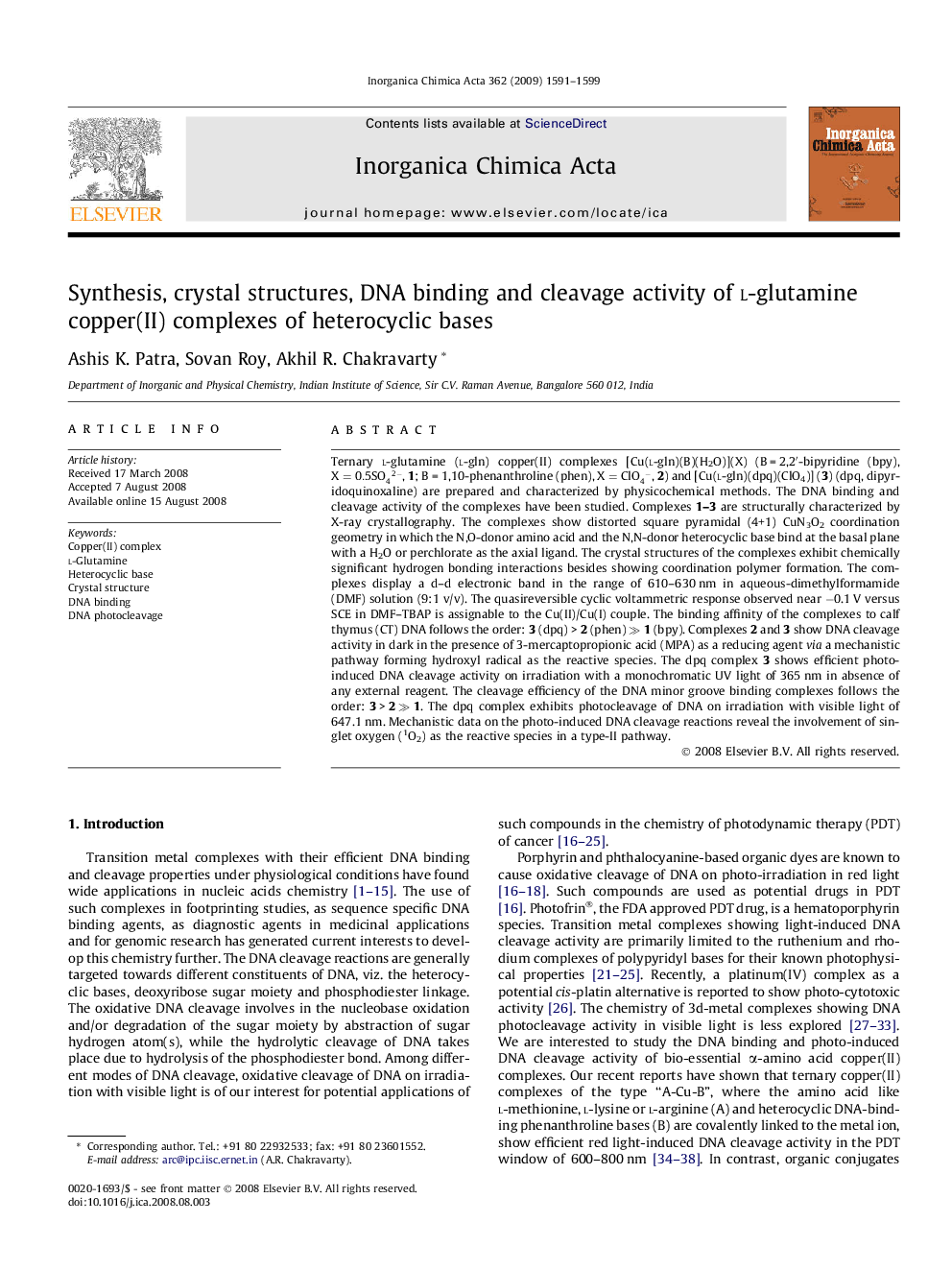| Article ID | Journal | Published Year | Pages | File Type |
|---|---|---|---|---|
| 1312695 | Inorganica Chimica Acta | 2009 | 9 Pages |
Ternary l-glutamine (l-gln) copper(II) complexes [Cu(l-gln)(B)(H2O)](X) (B = 2,2′-bipyridine (bpy), X=0.5SO42-, 1; B = 1,10-phenanthroline (phen), X=ClO4-, 2) and [Cu(l-gln)(dpq)(ClO4)] (3) (dpq, dipyridoquinoxaline) are prepared and characterized by physicochemical methods. The DNA binding and cleavage activity of the complexes have been studied. Complexes 1–3 are structurally characterized by X-ray crystallography. The complexes show distorted square pyramidal (4+1) CuN3O2 coordination geometry in which the N,O-donor amino acid and the N,N-donor heterocyclic base bind at the basal plane with a H2O or perchlorate as the axial ligand. The crystal structures of the complexes exhibit chemically significant hydrogen bonding interactions besides showing coordination polymer formation. The complexes display a d–d electronic band in the range of 610–630 nm in aqueous-dimethylformamide (DMF) solution (9:1 v/v). The quasireversible cyclic voltammetric response observed near −0.1 V versus SCE in DMF–TBAP is assignable to the Cu(II)/Cu(I) couple. The binding affinity of the complexes to calf thymus (CT) DNA follows the order: 3 (dpq) > 2 (phen) ≫ 1 (bpy). Complexes 2 and 3 show DNA cleavage activity in dark in the presence of 3-mercaptopropionic acid (MPA) as a reducing agent via a mechanistic pathway forming hydroxyl radical as the reactive species. The dpq complex 3 shows efficient photo-induced DNA cleavage activity on irradiation with a monochromatic UV light of 365 nm in absence of any external reagent. The cleavage efficiency of the DNA minor groove binding complexes follows the order: 3 > 2 ≫ 1. The dpq complex exhibits photocleavage of DNA on irradiation with visible light of 647.1 nm. Mechanistic data on the photo-induced DNA cleavage reactions reveal the involvement of singlet oxygen (1O2) as the reactive species in a type-II pathway.
Graphical abstractTernary copper(II) complexes of l-glutamine and heterocyclic bases are prepared and structurally characterized. Dipyridoquinoxaline complex (3) shows efficient DNA binding and DNA photocleavage activity in red light via 1O2 pathway.Figure optionsDownload full-size imageDownload as PowerPoint slide
